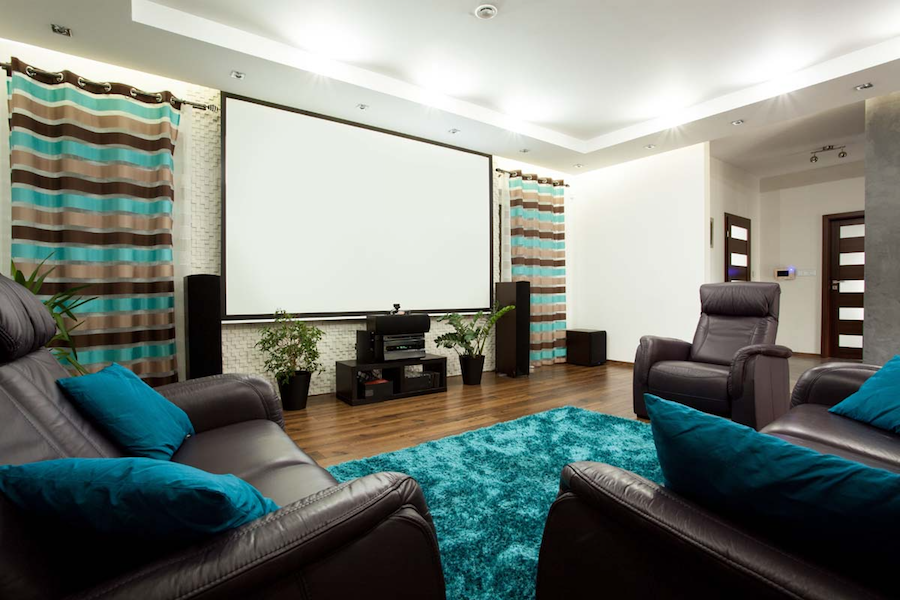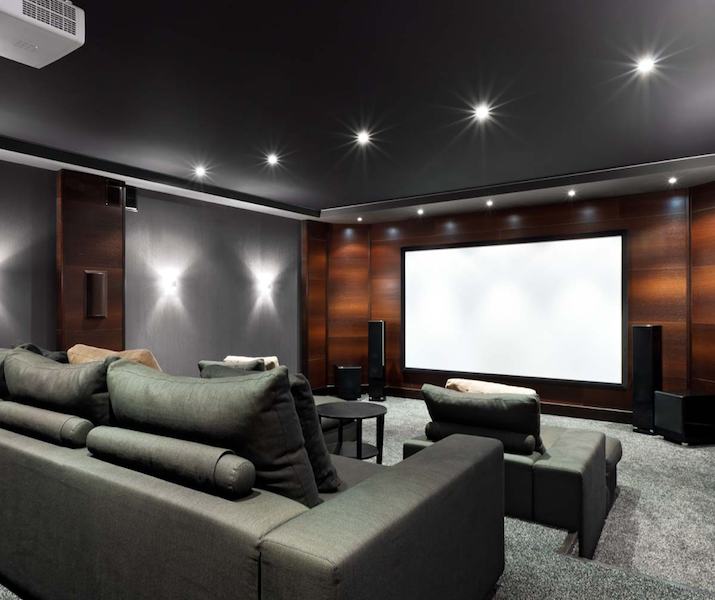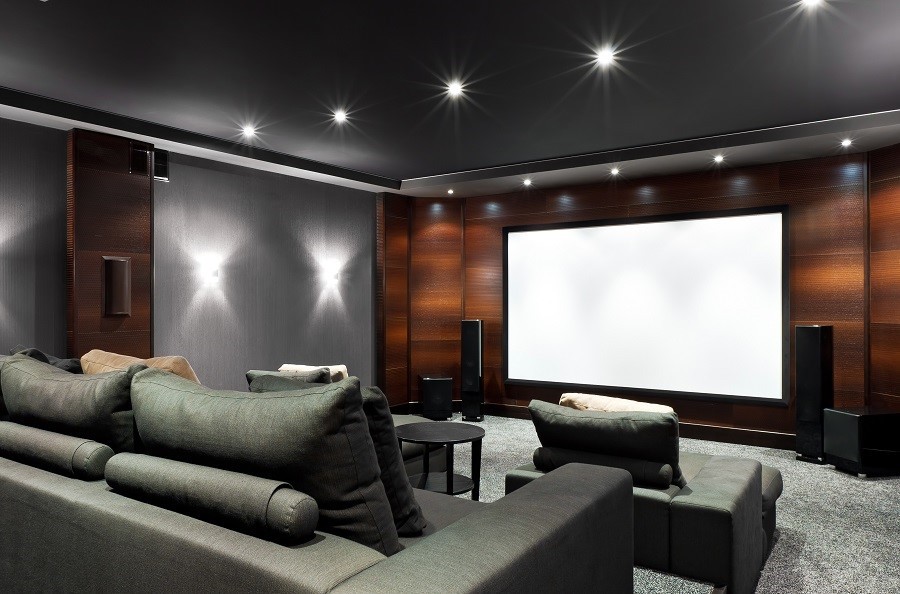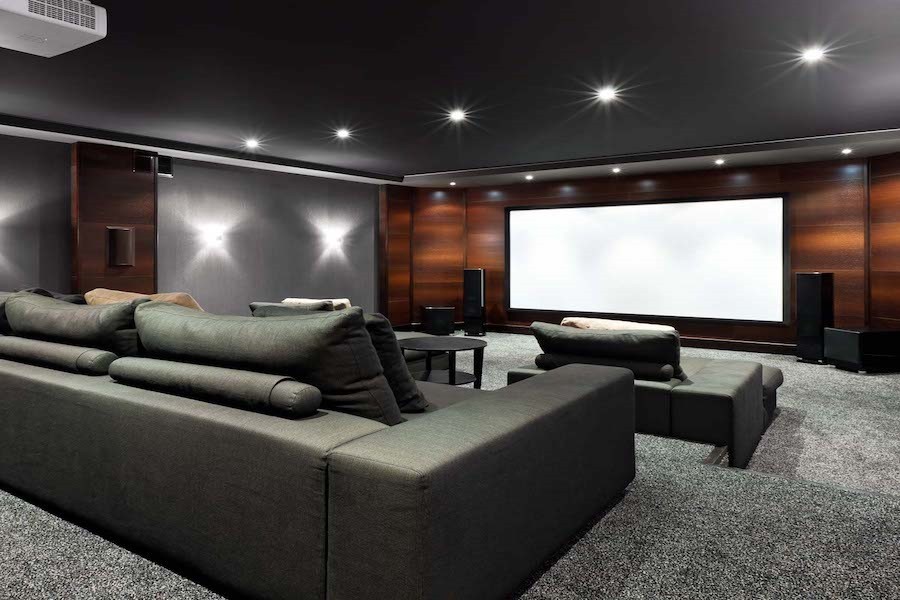“Home theater system” is a term that can mean a lot of different things. You might consider the television, sound bar, and Blu-ray player in your living room to be a home theater of sorts, but it’s a very different movie-watching experience than what you would get in a dedicated home theater. For homeowners in the Colleyville, Texas area who really want the best audio and visual environment, here is the best approach:
Start with a Dedicated Room
One of the reasons why it’s so difficult to get that great movie quality in your living room is that the space isn’t designed for that purpose. Instead, the room is designed to accommodate other purposes, such as chatting with friends and family. The television’s placement is often an afterthought, based on where the sofa and coffee table look best. And there usually just isn’t a good place to install surround sound speakers.
That’s why it’s best to let your living room be a living room and leave the media systems to a dedicated room. A dedicated home theater is optimized in every way to be perfect for movie-watching. The seating is arranged for easy viewing of the screen, and surround sound speakers envelop you with immersive, robust audio.
Add in the Right Equipment
Not all home theater equipment is created equal, and the best speakers and projector for your system will depend on a variety of factors, such as the size and shape of the room. That’s why you should always leave the decision of selecting equipment in the hands of a home theater professional. A professional installer will be able to design a solution with the right mix of devices. Generally speaking, your home theater system should include a 4K Ultra HD projector and screen along with a Dolby Atmos surround sound system.
Deprecated: Creation of dynamic property EasyBlogSocialButtonExternal::$post is deprecated in /home/dbmediapro/public_html/administrator/components/com_easyblog/includes/socialbuttons/adapters/external.php on line 42








